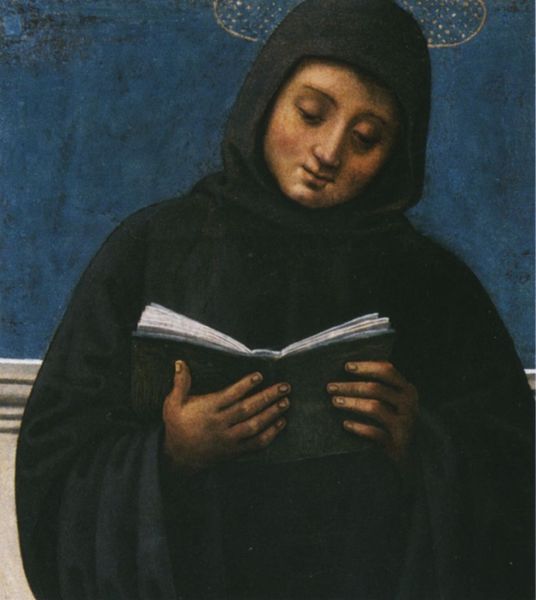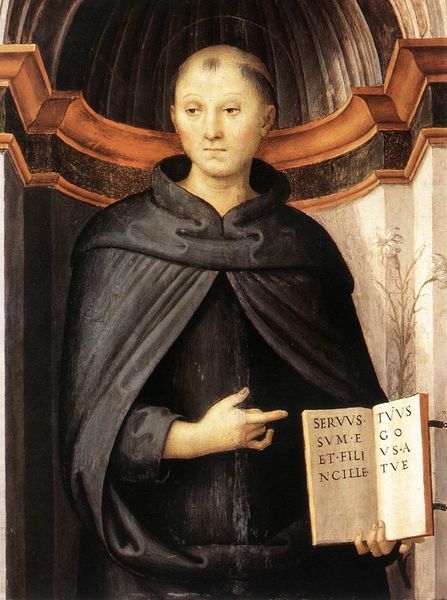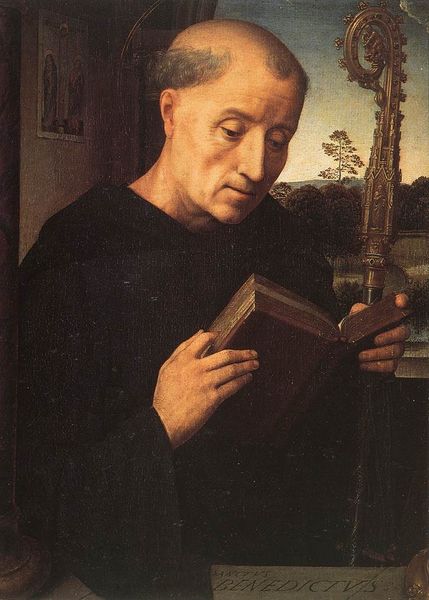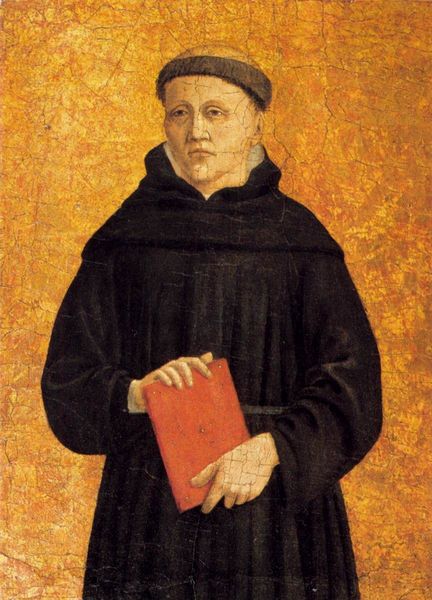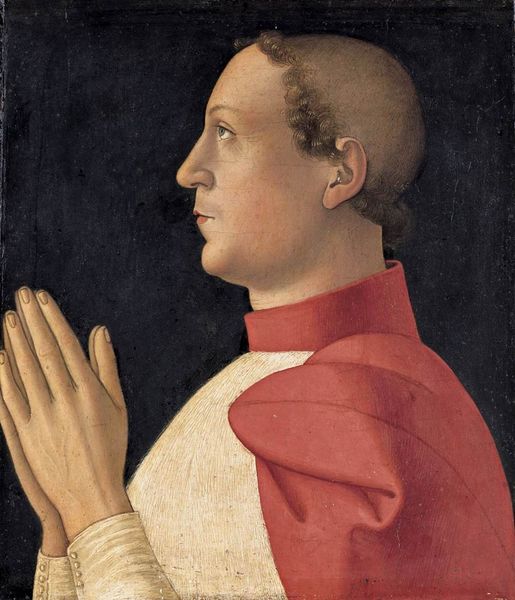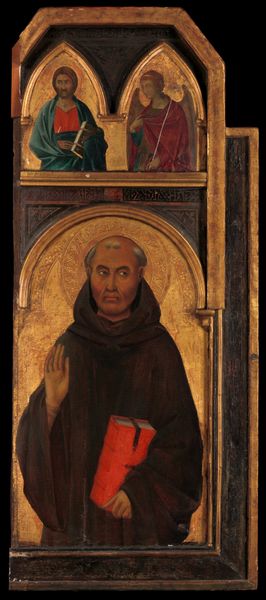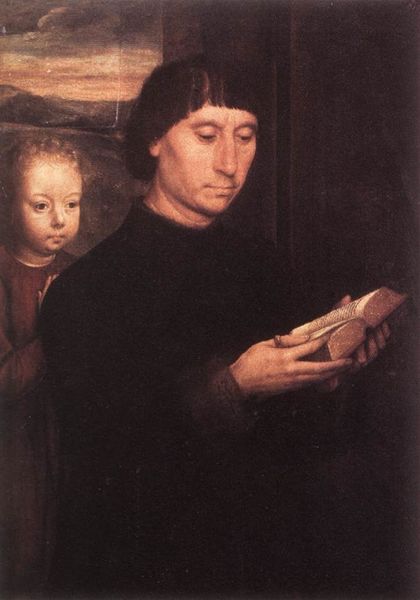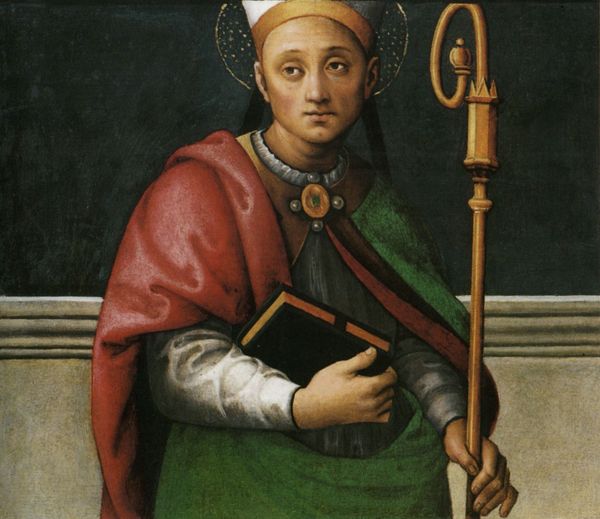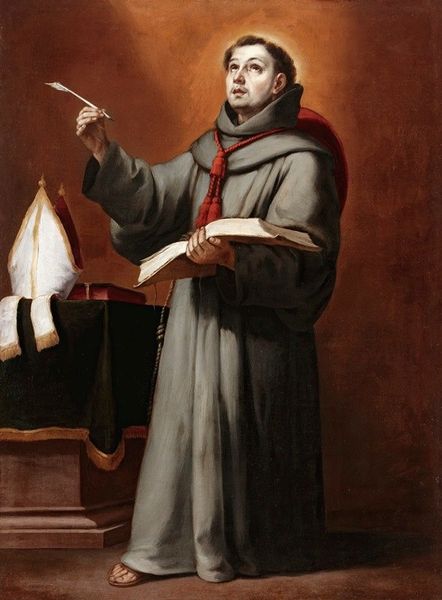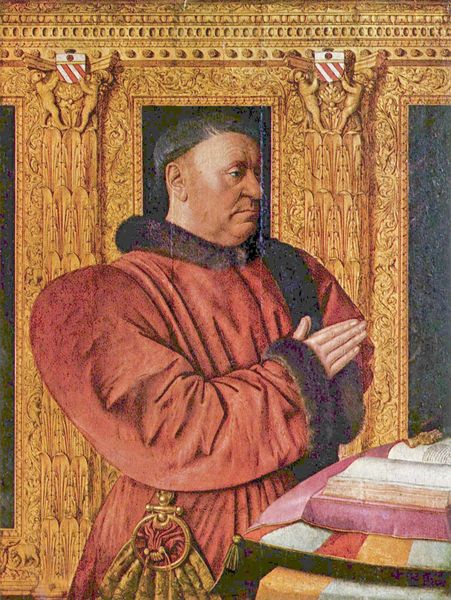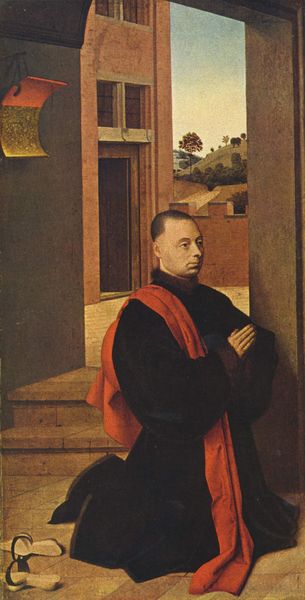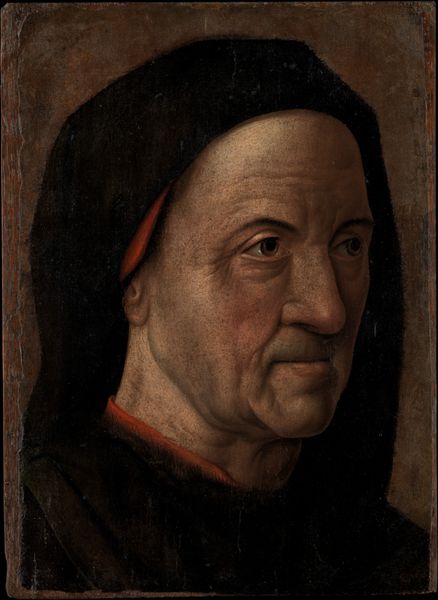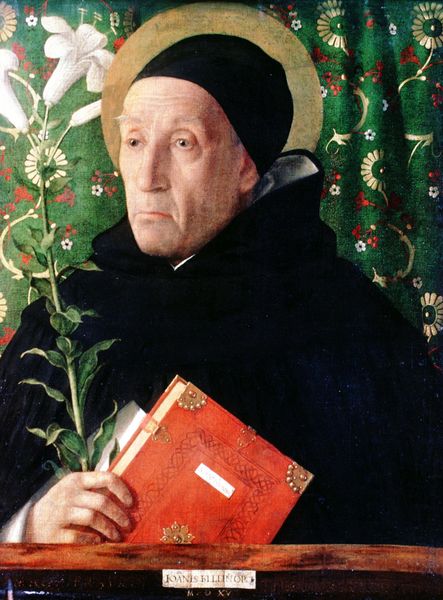
painting, oil-paint
#
portrait
#
painting
#
oil-paint
#
11_renaissance
#
christianity
#
history-painting
#
italian-renaissance
#
self portrait
Copyright: Public domain
Editor: This is Pietro Perugino’s *Polyptych of St. Peter (San Pietro Vincioli)*, painted around 1500. It is oil on panel. The subdued color palette gives it a pensive, almost contemplative mood. The composition seems very balanced. What do you see in this piece from a formal perspective? Curator: Formally, I'm struck by how the artist manipulates the interplay of light and shadow. Notice how the light delicately models the face, drawing our eye to it, while the deep shadows of the robe create a sense of volume and depth. The hand gesture too invites one to engage with the textual plane presented, but is ultimately truncated by its partial concealment. What about the texture? Editor: I didn't immediately focus on texture, but I appreciate how the artist balances smooth skin tones with the rougher texture of the book's pages, or the folds of his monastic habit. Do you think the text itself holds meaning within this painting? Curator: Intriguing point! The placement of the book, the manner in which the figure invites us to contemplate the letters as symbols is something worth appreciating here, even if it's an interplay we cannot access directly. If these words carry semantic weight or phonetic significance, Perugino intentionally obscures that detail for the contemporary eye, don't you think? Editor: I do. The interplay between concealment and revelation seems quite deliberate. Thinking about your points regarding depth, the balance of texture and lighting draws attention to that push and pull. I hadn't considered that before. Thanks! Curator: And thank you for bringing your insightful observations. Looking closely at form is key. It reveals more than we initially realize.
Comments
No comments
Be the first to comment and join the conversation on the ultimate creative platform.
